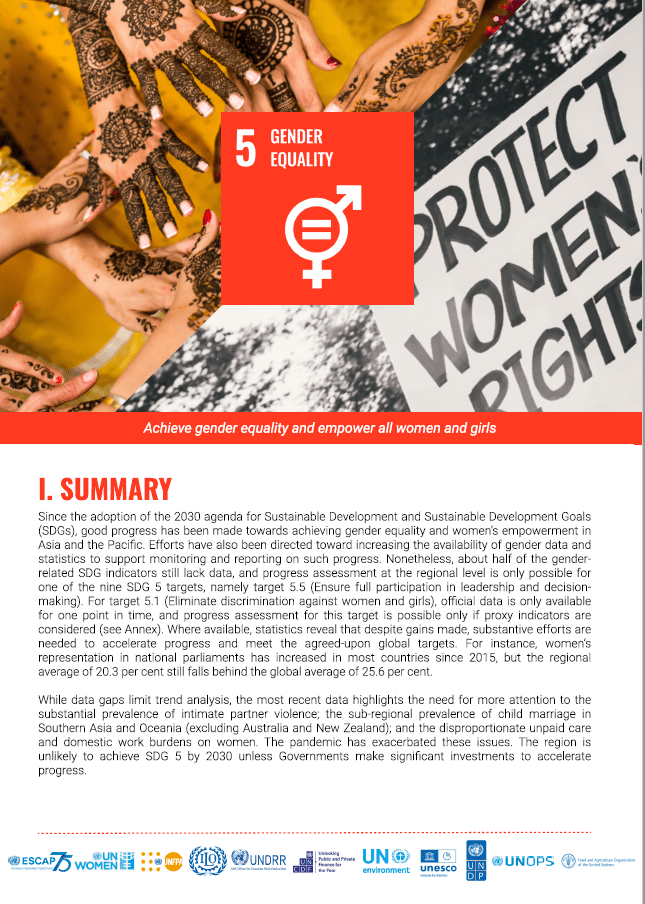
Since the adoption of the 2030 agenda for Sustainable Development and Sustainable Development Goals (SDGs), good progress has been made towards achieving gender equality and women’s empowerment in Asia and the Pacific. Efforts have also been directed toward increasing the availability of gender data and statistics to support monitoring and reporting on such progress. Nonetheless, about half of the gender-related SDG indicators still lack data, and progress assessment at the regional level is only possible for one of the nine SDG 5 targets, namely target 5.5 (Ensure full participation in leadership and decision making). For target 5.1 (Eliminate discrimination against women and girls), official data is only available for one point in time, and progress assessment for this target is possible only if proxy indicators are considered (see Annex). Where available, statistics reveal that despite gains made, substantive efforts are needed to accelerate progress and meet the agreed-upon global targets. For instance, women’s representation in national parliaments has increased in most countries since 2015, but the regional average of 20.3 per cent still falls behind the global average of 25.6 per cent.
While data gaps limit trend analysis, the most recent data highlights the need for more attention to the substantial prevalence of intimate partner violence; the sub-regional prevalence of child marriage in Southern Asia and Oceania (excluding Australia and New Zealand); and the disproportionate unpaid care and domestic work burdens on women. The pandemic has exacerbated these issues. The region is unlikely to achieve SDG 5 by 2030 unless Governments make significant investments to accelerate progress.
Access here: SDG 5 Goal Profile

